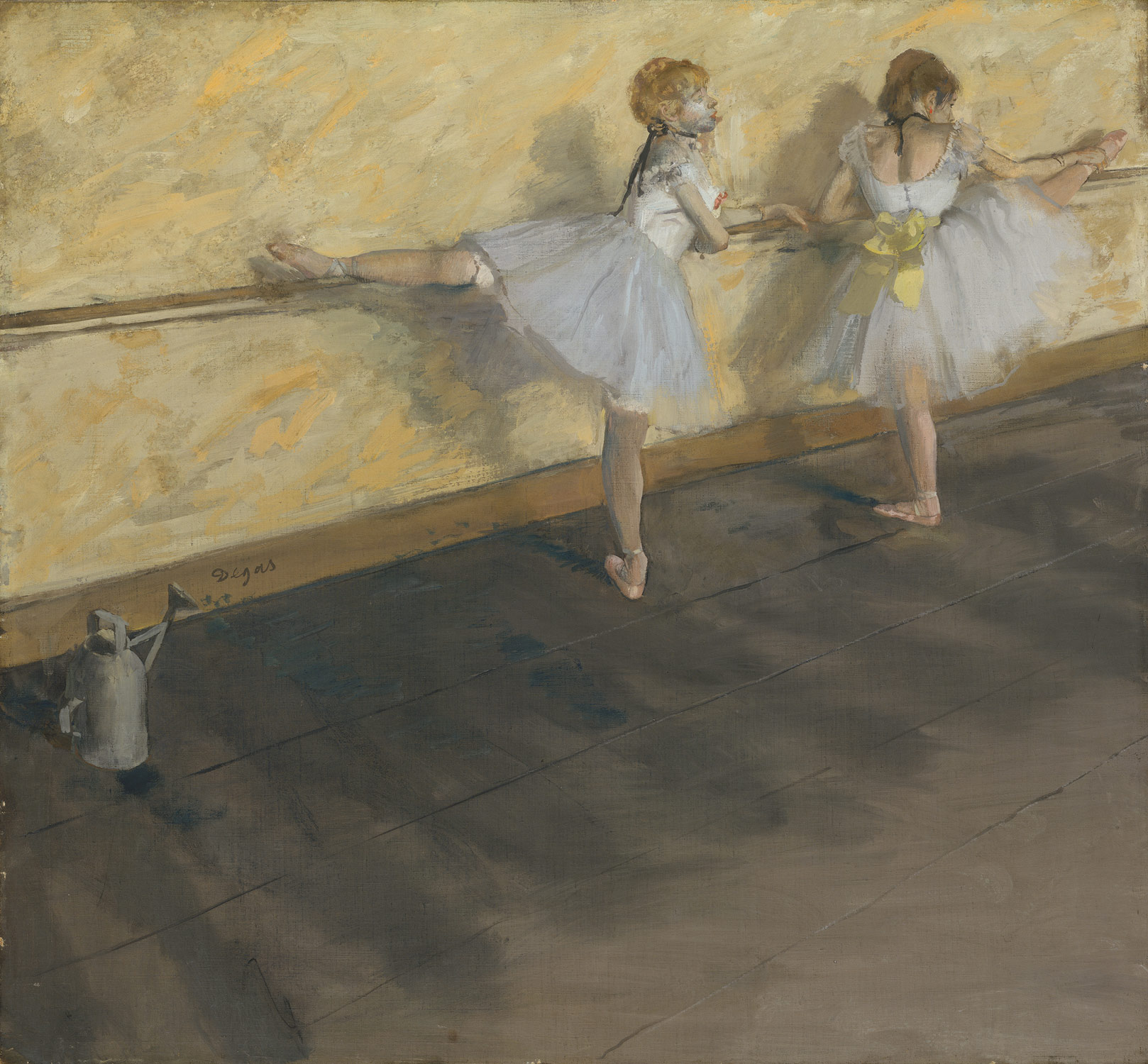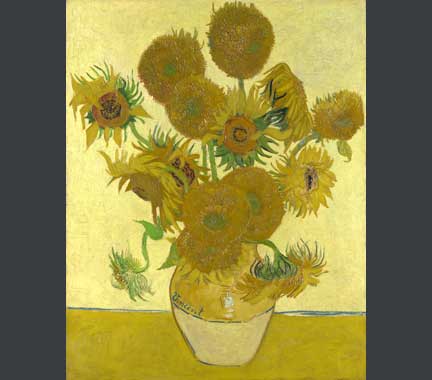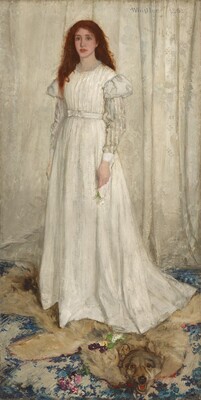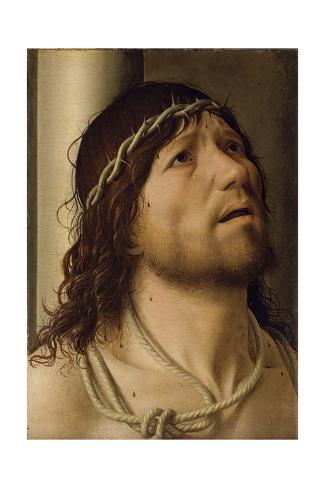National Museum of Western Art

This painting is called "Landscape with Stormy Sea." The artist, Alessandro Magnasco was born in Genoa. This canvas was painted during Magnasco's most prosperous years, those of his second Milanese period of 1718-1725. The color palette consists of dark, rich colors. Swirling brush strokes, and tall, slender figures crouching half hidden in shadows all give this artwork an extremely dramatic, illusionary feel.

This painting is called "Mater Dolorosa." It was painted by Carlo Dolci in 1655. Carlo Dolci specialized in religious paintings. He worked exclusively on small canvases for the individual. In this work of art, the Virgin is portrayed in a bright blue gown against a pitch-dark background and a mystic light painted in gold is shining overhead.

This painting is called "Christ Carrying the Cross." It was done by Joachim Beuckelaer in 1562. Beuckelaer is a 16th Century Flemish artist. He is known for his views of a kitchen with a table adorned with vegetables and other food and for market scenes. In this painting, Christ is carrying his cross to the place in Golgotha where he will be crucified.

This is a beautiful painting called "Water Lilies." The artist, Claude Monet painted it in 1916. Monet moved to Giverny, bought the land in front of his home and built a Japanese style garden. He created many paintings of the changing images of the pond. In this work, he filled the entire surface of the canvas with an image of the pond, giving the viewer an impression of standing in the center of the pond.
This painting is called "Dancers Practicing at the Barre." It was done with mixed media on canvas in 1877. The talented artist who created this painting was Edgar Degas. Degas used the watering can as a visual pun: its shape is mimicked by that of the dancer on the right. In 1912, it was purchased for $95,700, a record price for a work by a living artist.
The painting is called "Brigand and His Wife in Prayer."It was done with oil on canvas in 1824. The artist, Léopold Robert worked in Rome. Pictured here, a young couple prays at a roadside shrine—not only for the husband’s success but for the health of the wife, who is noticeably pregnant. One critic noted that he had blurred the boundary between history and genre painting—but praised the naturalism of his figures.

This painting is simply called "A portrait of a Man and His Wife." It was painted by the German painter,
Ulrich Apt the Elder in 1512. The couple pictured is thought to be the Augsburg merchant, Lorenz Kraffter and his wife, Honesta Merz. Double portraits are relatively rare. Three versions of this painting exist. The initial version, was most likely intended for the couple’s private home, while the copies may have been made for family members.
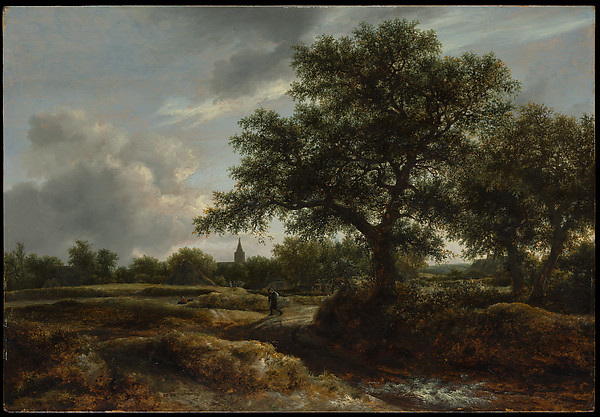
This painting is called "Landscape with a village in the Distance." It was done with oil on wood in 1646. Dutch painter, Jacob van Ruisdael was only eighteen years old when he completed this work of art. The painting is one of nine known landscape paintings done by van Ruisdael. The naturalistic description of foliage and the dramatic presentation of trees forecast the future of Holland's greatest landscape painter.
London National Gallery
This painting is called "Equestrian Portrait of Charles I." It was painted around 1637 by Anthony van Dyck. It was done with oil on canvas. Van Dyck became the court painter to King Charles I in 1632. The artist created images of him which expressed the king's belief in his divine right to govern.
This painting is "Seaport with the Embarkation of Saint Ursula." It was completed in 1641 by Claude. The medium is oil on canvas. According to legend, Saint Ursula was a British princess who made a pilgrimage to Rome with 11,000 virgin companions. Eventually, they were all martyred. Saint Ursula is pictured here, holding a flag with her emblem on it.
This painting is called "Sunflowers." It's a pretty famous picture, painted by Vincent van Gogh. This is one of his four paintings of sunflowers dating from August and September 1888. Van Gogh intended to use the painting to decorate a room in the "Yellow House" that he rented. The dying flowers are built up with thick brushstrokes to give them lots of texture.
This painting is called "The Arnolfini Portrait." It was done in 1434 by artist Jan van Eyck. Van Eyck was interested in the effects of light: oil paint allowed him to depict it with great subtlety in this picture, notably on the gleaming brass chandelier. This work is a portrait of Giovanni di Nicolao Arnolfini and his wife. The wife is not pregnant, as often thought, but rather holding up her dress in the contemporary fashion.
National Gallery of Art
This painting is titled "Symphony in White, No. 1: The White Girl." It was painted in 1862 by James McNeill Whistler. His model was Joanna Hiffernan, a well-known beauty who also modeled for other artists of the day. Her red hair is loose, contrasting vividly with the tonal white interior setting and dress. Gazing impassively, her expression is vacant and unfocused.
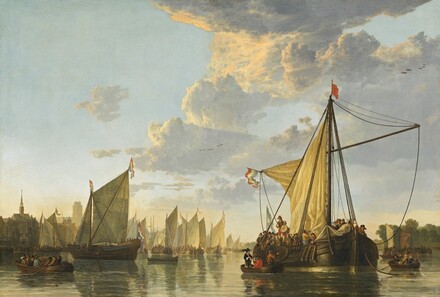
This painting is called "The Maas at Dordrecht." It was painted by the Dutch artist Aelbert Cuyp in 1650. The extraordinary light effects bring an early summer morning to life and the dramatic sweep of clouds enhance the massive scale of the painting. Most of the ships have their sails raised as though they are about to depart. The overall sense of the scene is one of great calm.
![Ginevra de' Benci [obverse]](http://media.nga.gov/public/objects/5/0/7/2/4/50724-primary-0-440x400.jpg)
This painting is called "Ginevra de' Benci." It was painted in 1478 by famous artist, Leonardo da Vinci. It pictures a young 16-year-old girl, Ginevra de' Benci. She has flawless chalk-white skin, porcelain-fine features, and a reserved impenetrable expression. Leonardo completed the work when he was only 21. It was revolutionary in the history of painting.
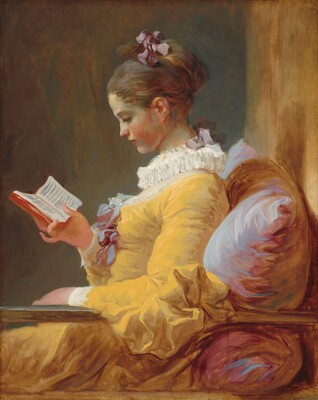
This visually delectable painting is called "Young Girl Reading." It was completed in 1770 by French artist, Jean-Honroe Fragonard. The girl is absorbed in a small book that she holds in her delicately curled right hand—pinky extended. Strong light from above softens the pink of her cheeks. Fragonard’s brushwork is astounding, the dress, ribbons, and the cushion are loosely brushed in large, vigorous, unblended strokes.
This painting is "Seashore by Moonlight." It is a typical German Romantic landscape painting. Caspar David Friedrich painted it in 1818. The different vertical and horizontal shapes balance each other and create an atmosphere of serenity and meditation. The range of colors is limited, but treated with great subtlety. The moon, whose light dominates the composition symbolizes Christ the savior.
This painting is called "Equestrian Portrait of Pierre Séguier." It was painted by Charles Le Brun about 1660. Le Brun was a leading artistic figure throughout the second half of the 17th century. In addition to his large historical pieces, he was an accomplished portraitist and a master of presentation. Also, he supervised many royal projects.
This painting is called "Christ at the Column." It was painted by Antonello Da Messina in 1476. It pictures Christ with his back against the whipping column, a crown of thorns on his head, and a rope around his neck. This is a small painting, intended for personal devotion. Antonello used Flemish oil painting techniques and detailed realistic style.
This Italian painting is called "Fishing." It was painted by Annibale Carracci in 1585. The artist was 24 when he painted this piece. He wanted to show the different activities connected with rural fishing. The colors play an important role in defining the space.
Art Institute of Chicago

This painting is called "Alphabet." It was painted by American artist, Jasper Johns in 1959. Since the mid-1950s, Johns has focused on everyday icons and emblems, or what the artist famously referred to as “things the mind already knows.” He has repeatedly used letters, either depicted individually or layered atop one another.
This painting is called "A Sunday on La Grande Jatte." It was painted by the French artist, Georges Seurat in 1884. This is his best-known and largest painting. The work depicts people relaxing in a suburban park on an island in the Seine River. The artist added small dots, in complementary colors, that appear as solid forms when seen from a distance.
This painting is called "Paris Street; Rainy DayThe figures seem mostly isolated, and their expressions are largely downcast. They appear to hurry rather than stroll through the streets, absorbed in their own thoughts.

This painting is called "Landscape with Saint John on Patmos." It was painted by Nicolas Poussin in 1640. The artist was born in France but spent the majority of his life in Rome. Poussin emphasized his admiration of Greco-Roman culture in his art by adding classical symbols. This painting is the face of the Baroque era.


